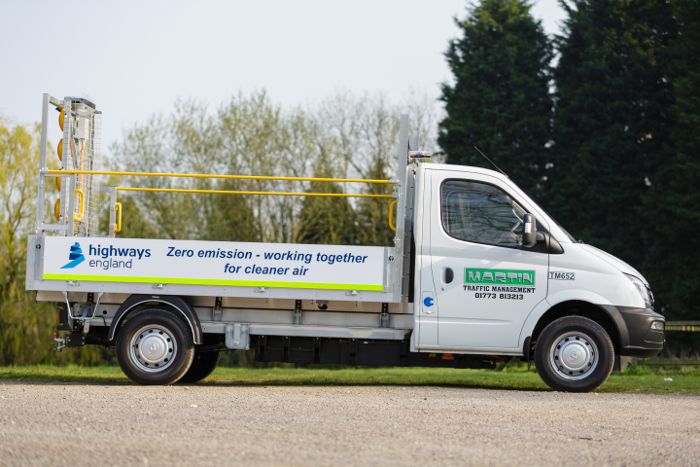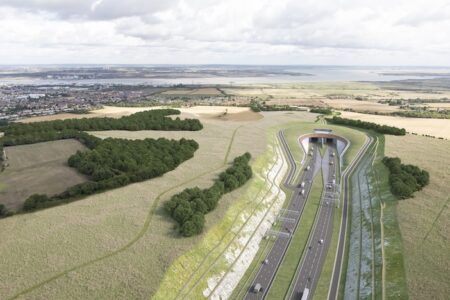Highways England (HE) has revealed that it is trialing two fully electric-powered roadworks vehicles for the first time, as part of a package of air quality measures to improve air quality along the country’s motorways and major A roads.
The five-month trial of the electric roadworks vehicles is being funded from HE’s £75m (US$94m) ring fenced fund designated for air quality improvements, which the company intends to spend in the current road investment period. The electric traffic management vehicle trial is running between April and August, with one of the vehicles being used across the East Midlands and the other on a major scheme that is improving the A14 in the East of England. This will be followed by a post-trial report, the results of which will inform future work around assessing how charging infrastructures are deployed for major projects and looking at the future potential for using electric roadworks vehicles.
HE is working with contractor H W Martin (Traffic Management Ltd) to trial the vehicles, which are being used for various tasks including traffic management, maintenance operations, and the installation and removal of lane closures for construction work. Experts from the University of Bath are helping collect and analyze data as part of this scientific trial to determine what activities these new vehicles are best suited to.
“We are actively exploring opportunities to improve air quality for those travelling on or living near our roads, as well as reduce exposure for road workers,” explained Martin Bolt, HE’s corporate group leader at the Midlands operations directorate. “These vehicles help with that and also reduce noise for nearby residents. We are now investigating how widely electric vehicles could sustainably be used across Highways England’s roads.”
Ryan Wood, technical manager for H W Martin, noted, “These two fully-electric vehicles are the first of their kind to be used for roadworks on England’s motorway and major A roads. Undertaking these trials will allow us to understand first-hand how the vehicles perform while carrying out different tasks and how current charging infrastructure provides a network for their use. Not only are we understanding the real-world performance of the vehicle, but also how our drivers adapt their behavior. This study allows us to continue moving our industry towards a more sustainable future.”





